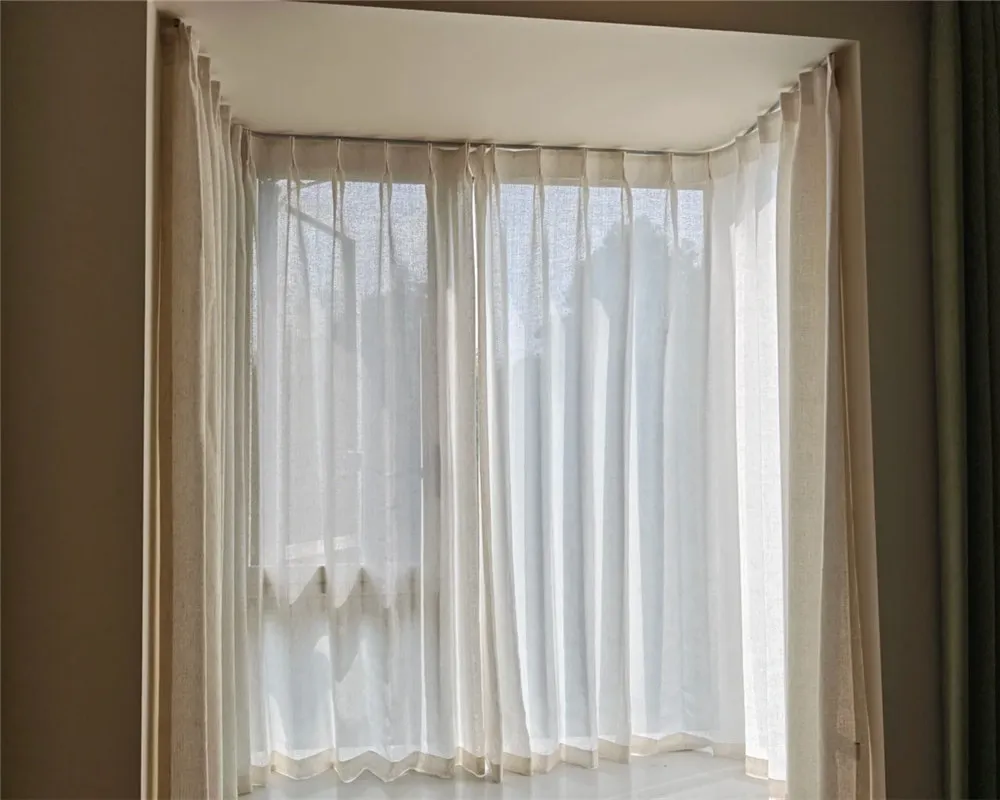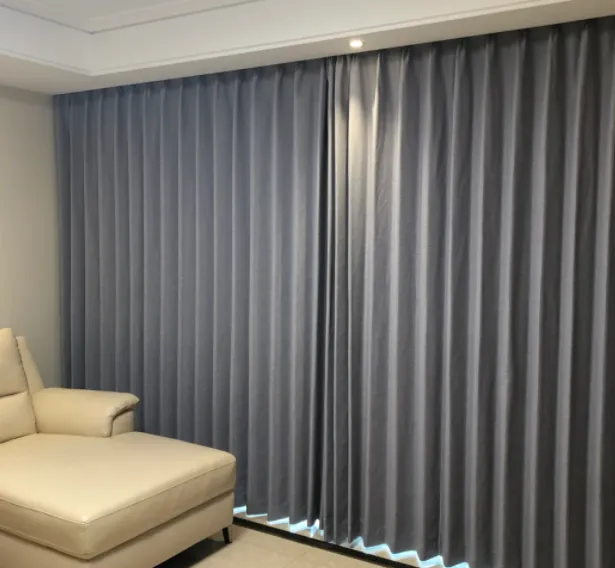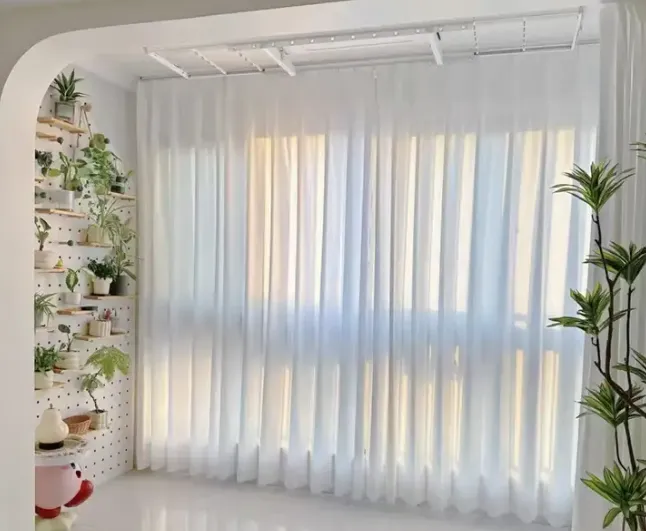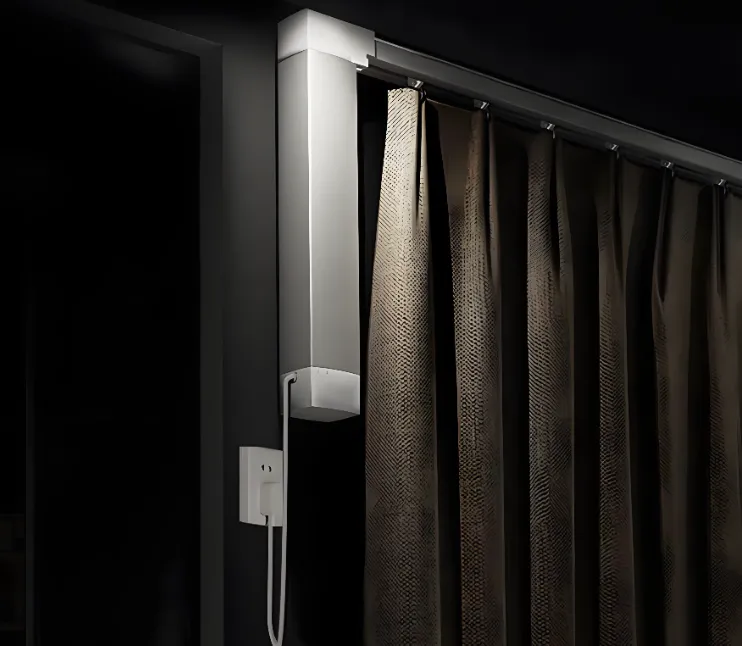Blackout Curtains 101: Everything You Need to Know About Light Blocking & More
Blackout curtains are more than just decorative elements for windows—they are functional solutions designed to block light, regulate room temperature, and enhance privacy. Whether you’re furnishing a bedroom, home theater, or office, understanding the key features, material options, and selection criteria of blackout curtains is essential to making an informed choice. This guide breaks down everything you need to know to choose, install, and maintain blackout curtains effectively.

1. What Are Blackout Curtains, and How Do They Work?
- Dense Fabric Construction: Most blackout curtains use tightly woven fabrics (e.g., polyester, cotton-linen blends) with high thread counts, which prevent light from passing through gaps in the weave.
- Light-Blocking Layers/Coatings: Many models add a secondary layer—such as a black cotton lining, acrylic foam backing, or PVC-free coating—to eliminate residual light penetration. High-quality options often feature “triple-weave” technology (three layers of fabric bonded together) for maximum light blockage without sacrificing drape.
Beyond light control, blackout curtains also offer secondary benefits: thermal insulation (reducing heat gain in summer and heat loss in winter)、sound dampening (absorbing external noise)、and enhanced privacy (blocking outside visibility day and night).

2. Key Performance Metrics to Evaluate
A. Light Blocking Rate
- 90%–95% Blockage: Suitable for bedrooms, nurseries, or home offices—blocks most light but may allow faint ambient glow around edges (ideal for those who don’t need total darkness).
- 96%–100% Blockage: Referred to as “total blackout,” these are perfect for home theaters, night shifts workers’ bedrooms, or rooms facing bright streetlights. Look for products labeled “100% blackout” and check for lining thickness (100–150 GSM linings are standard for full light blockage).
B. Thermal Insulation
- Reflecting sunlight to lower indoor temperatures in summer (reducing AC usage).
- Trapping heat near windows to keep rooms warm in winter (cutting heating bills).
C. Fabric Durability
- Thread Count: Aim for 250+ thread count—higher counts mean tighter weaves, better light blockage, and resistance to fraying.
- GSM (Grams per Square Meter): A measure of fabric weight. For blackout curtains, 200–300 GSM is ideal—lighter fabrics (below 180 GSM) may sag or let in more light, while heavier fabrics (above 350 GSM) can be stiff and hard to install.
D. Environmental Safety
- PVC-free, water-based coatings.
- OEKO-TEX® Standard 100 certified fabrics (ensuring no harmful substances like formaldehyde or heavy metals).
- Natural fiber blends (e.g., organic cotton-linen) for eco-conscious buyers.
3. Popular Blackout Curtain Materials: Pros, Cons, and Best Uses
Material | Light Blocking Rate | Texture & Appearance | Key Advantages | Key Disadvantages | Best For |
Polyester (Triple-Weave) | 95%–100% | Smooth, wrinkle-resistant, crisp drape | Durable, machine-washable, affordable, colorfast | Low breathability (may trap moisture in humid rooms) | Bedrooms, home theaters, high-traffic areas |
Cotton-Linen Blend | 85%–95% | Soft, natural texture, subtle wrinkles | Breathable, eco-friendly, stylish (works for bohemian/Scandinavian decor) | Prone to shrinking (needs cold-water washing), less durable than polyester | Living rooms, bedrooms (for natural aesthetic) |
Velvet/Velour | 90%–98% | Luxurious, thick, shiny | Excellent sound dampening, thermal insulation, elegant look | High-maintenance (dry-clean only), attracts dust | Formal living rooms, master bedrooms, home theaters (luxury vibe) |
Coated Polyester | 98%–100% | Slightly stiff, matte finish | 100% light blockage, waterproof (some models) | May peel over time, low breathability | Bathrooms, kitchens, rooms with high humidity |
4. How to Choose Blackout Curtains for Different Rooms
A. Bedrooms
- Priority: Light blockage (90%+), comfort, noise reduction.
- Material: Triple-weave polyester (durable, easy to clean) or cotton-linen blend (breathable).
- Color: Dark hues (navy, charcoal) block more light, but light neutrals (beige, gray) can brighten the room when curtains are open. Avoid bright colors—they may reflect light and reduce blackout efficiency.
- Extra Tip: Add curtain tracks (instead of rods) to minimize light gaps along the sides and top.
B. Home Theaters
- Priority: 100% light blockage, sound absorption, thermal insulation.
- Material: Velvet (sound dampening) or triple-weave polyester (affordable, full light blockage).
- Design: Floor-to-ceiling, wall-to-wall curtains (covers window frames completely to eliminate light leaks).
- Extra Tip: Choose curtains with “light-blocking side hems” (thickened edges) to prevent light from seeping through gaps.
C. Living Rooms
- Priority: Balanced light control (60%–80% blockage), style, durability.
- Material: Cotton-linen blend (natural look) or velvet (luxury).
- Color/Pattern: Neutral tones (white, taupe) or subtle patterns (stripes, florals) to complement decor—avoid overly bold prints that clash with furniture.
- Extra Tip: Layer with sheer curtains for flexibility (use sheers for soft light during the day, blackout curtains for privacy at night).
D. Kids’ Rooms
- Priority: Safety, easy maintenance, fun design.
- Material: OEKO-TEX® certified polyester (non-toxic, machine-washable).
- Features: Blackout lining (for naptime)、stain-resistant coating (for spills)、and kid-friendly prints (animals, space themes).
- Extra Tip: Avoid long cords—opt for cordless or motorized curtains to prevent choking hazards.
5. Installation & Maintenance Tips for Longevity
A. Installation Best Practices
- Measure Correctly: Curtain width should be 1.5–2x the window width (for fullness and to block light gaps). Length should be 1–2 inches above the floor (prevents dragging and dirt buildup).
- Mounting Height: Install curtain rods 4–6 inches above the window frame and 3–4 inches beyond the frame sides—this creates the illusion of a larger window and blocks light from the top/sides.
- Hardware: Use heavy-duty rods (for thick fabrics like velvet) and curtain rings with clips (for easy removal and washing). For total blackout, add a “light-blocking valance” (covers the top gap between the rod and window).
B. Maintenance Guidelines
- Washing:
- Machine-washable fabrics (polyester, cotton-linen): Use cold water, gentle cycle, and mild detergent. Avoid bleach (fades colors) and high heat (causes shrinking/coating damage).
- Dry-clean only (velvet, silk blends): Follow care labels to prevent fabric damage.
- Drying: Air-dry or tumble-dry on low heat—high heat can melt coatings or shrink natural fibers.
- Cleaning Dust: Vacuum with a soft brush attachment weekly (prevents dust buildup, especially for velvet). For stains, spot-clean with a damp cloth and mild soap (test on an inconspicuous area first).
6. Common Myths About Blackout Curtains (Debunked)
- Myth 1: “All blackout curtains are 100% lightproof.”
- Myth 2: “Blackout curtains make rooms stuffy.”
- Myth 3: “Blackout curtains are only available in dark colors.”
Final Thoughts





